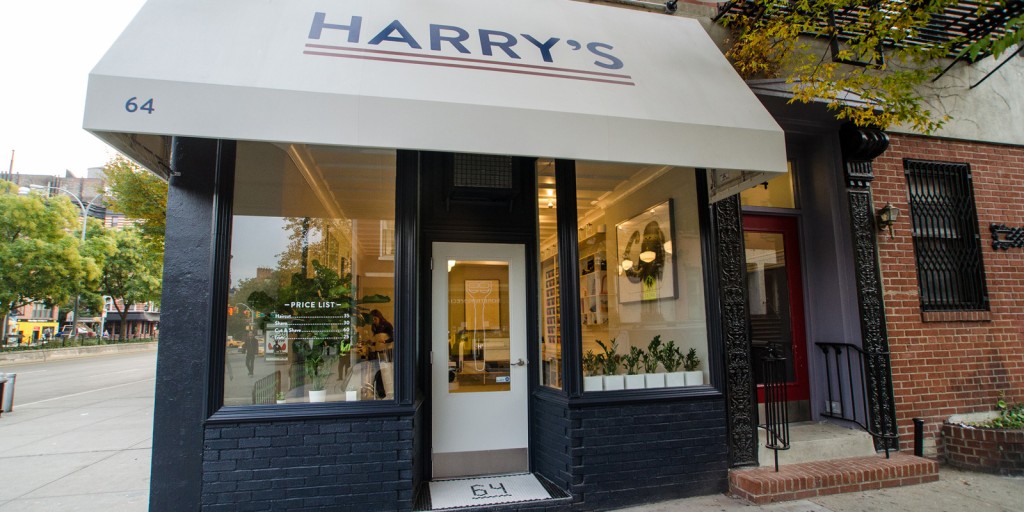Harry’s is pulling the plug on their NYC Corner Shop on March 2. Here’s what we’ve gathered.
NEW YORK — No matter how you look at it, Harry’s has great momentum. In the span of just a few days earlier this month, they announced both a massive new round of funding — a $112M Series D, bringing the total raised to $474.5M so far — as well as the news that they’d just signed a new partnership with Walmart to be carried at select locations.
Remember too that they own their own razor factory in Germany, and with this new raise are also now planning on developing new products beyond the men’s shaving category. Big things are happening there, in other words, and while they can’t yet boast a billion dollar exit like Dollar Shave Club, you can be sure that Harry’s is well on their way to equaling or besting that valuation as we speak.
But not all facets of the business are set to enjoy this next stage of Harry’s rapid rise. Lean Luxe has learned that on March 2nd the company plans to shut down the Corner Shop, its hybrid barbershop-meets-retail location in Soho. To be clear, it’s not exactly a closure — Harry’s have simply chosen not to renew their five year lease on the location. But it still very much feels like one, given the decision by founders Andy Katz-Mayfield and Jeff Raider to go this route.
That’s curious given the reported popularity of the place, according to sources. “It certainly didn’t seem like a lack of foot traffic,” one source told us. “No matter what day I went, the door had trouble staying closed and getting an appointment was difficult to say the least.” While it’s difficult to know the exact reasons why Harry’s decided to not renew, Raider did offer this response in an email to Lean Luxe:
“We are proud of what we’ve built and accomplished at the Corner Shop, but have made a business decision to close its doors, as Harry’s continues to grow across the grooming category with our direct-to-consumer and retail businesses. We care tremendously about the Corner Shop team and the staff will receive continued support from Harry’s to position them for success after the shop’s closing.”
Not the most revealing of answers. But it does offer something. In reading between the lines, there’s the sense — especially in the context of their new raise, and their newly stated ambitions to expand into categories beyond shaving — that Harry’s has perhaps outgrown the quaintness of the Corner Shop.
Perhaps, as one Lean Luxe reader suggested, it’s a re-evaluation of how the store fits in with the brand narrative overall. That would seem to make sense. From the start, Harry’s seemed to approach the location as more of a branded experiment, rather than the test kitchen for the playbook they’d use to build out their retail footprint in the US.
That’s particularly true when you compare the difference in Warby Parker’s initial forays into experiential retail, versus their actual brick and mortar surge. The Warby Parker Bus from 2012 was a branded experience play and clearly not the model they used to build out their retail network today.
Similarly, you could argue that the Corner Shop was Harry’s (longer-term) version of the Warby Parker Bus experiment, rather than a serious retail test. Once source added credence to this, saying that the location, as a hybrid barbershop and small store, was “Hard to scale as a stand-alone business. More of a marketing ploy, but didn’t make sense to scale.”
On a more basic level, several Lean Luxe subscribers pointed out two additional considerations for us. First, barbershops are notoriously difficult to staff — let alone scale. One source suggested that “Corporate may have underestimated the logistics of running a barber shop.” Another who helped open the Corner Shop in 2013 offered this perspective: “Not sure it was ever profitable. They had a lot of issues early on just staffing, merchandising, and figuring out retail operations. I’m sure it improved but that rent is not cheap.” That’s a nice segue to the second big consideration: Commercial rent in Soho is starting to get outrageous. “I’ve heard from a broker that rental rates in Soho are getting jacked up in a non-linear manner capitalizing on the whole pop-up madness.”
Big picture: Wholesale > Brick and mortar. Let’s not overlook Harry’s increasing focus on big box wholesale partners. Alongside Bevel and Casper, they were one of the first online brands to partner with Target, and now comes the Walmart announcement. Harry’s thinking on this from the perspective of the Walmart deal says a lot about where they’re going too: “According to Katz-Mayfield, the goal of this expansion is to be where Harry’s customers are and since 90% of the U.S. population lives within 10 miles of Walmart, this gives Harry’s a shot at becoming a household name.”
They seem to be doubling down on big name retailers, so having their own store might naturally be at odds with this strategy. Certainly something to consider as we watch Harry’s going forward.






